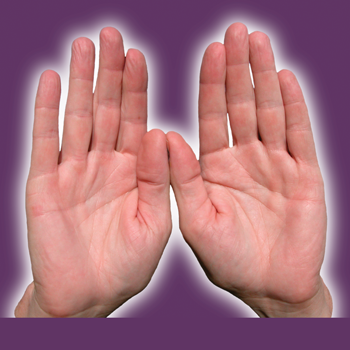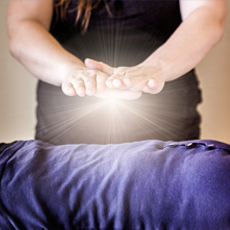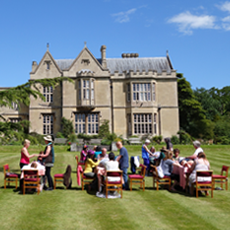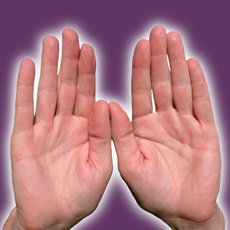by William Lee Rand
The Western style of Reiki was created by Mrs. Takata when she began practicing and teaching in Hawaii in the late 1930’s. Because of World War II (which the US entered after Japan bombed Pearl Harbor, Hawaii in 1941), there was a negative sentiment toward anything Japanese. This may be one reason she chose not to teach the Japanese techniques she learned from Hayashi Sensei. Another reason may be that she didn’t think the western mind could comprehend the Japanese style. The style she taught was a combination of a simplified form of one of the Japanese techniques along with a hand placement style that she created herself. Her style is effective and offers us a variation from what is taught in Japan.
The Takata or Western style is based mainly on the systematic use of a standard hand position system Takata called the foundation treatment. This is a much-simplified version of what she learned from Hayashi. It included only seven hand positions—four hand positions over the torso and three positions on the head. (See “How Hawayo Takata Practiced and Taught Reiki,” by Marianne Streich, Reiki News Magazine, Spring 2007.) Takata used intuition to discover the location of the cause of a particular condition and gave additional Reiki to those areas after completing the foundation treatment. She also advocated giving many treatments to achieve success.
Because Takata didn't allow her students to take notes, nor did she offer any handouts or written material, the nature and historical account of her foundation treatment changed after she passed. Additional hand positions were added and the use of one’s intuition in discovering the cause wasn't always taught. Over time, many styles of Reiki developed; many of which claim to be the same as the way Takata practiced, and some even claiming to be the same as Usui Sensei had practiced, even though they are much different. (The material for the article referenced above came from interviews with Takata’s students and from the two biographies that have been published.)
However, the important thing is that her style is effective. It is a logical, systematic method that follows the same pattern for every client. By treating the torso and head, the most important organs of the body receive Reiki. In addition, a reservoir of Reiki energy is built up within the body and energy field that continues to nurture and promote health and well-being after the treatment is over. Takata’s method of using one’s intuition to determine the location of the cause of specific conditions is most likely a simplified form of Reiji ho, which according to her diary, she learned from Hayashi Sensei.
The original Japanese style created by Usui Sensei requires the student to spend more time in practice so as to develop his/her ability in using the various intuitive methods. Also, the Japanese style emphasized the student receiving repeated Reiki attunements or reiju’s, which over time strengthened Reiki energy.
It is interesting to note that after World War II, Reiki went underground in Japan. It was practiced in secret by the Usui Reiki Ryoho Gakkai who very rarely accepted new members. Because of this, Japanese citizens who wanted to learn Reiki went to Hawaii, the US mainland, and Canada to take classes, or learned from Western teachers who traveled to Japan. Most Japanese Reiki teachers combine the Western Takata style with concepts and methods they were able to learn from their research into the Japanese style. But the attunement and lineage in their systems remain Western. Some Japanese teachers do not openly reveal this fact, allowing students who take their “Japanese” Reiki to believe they have an original form. Fortunately the Hayashi style, including the lineage and attunement method, has been preserved and is currently taught by Tadao Yamaguchi’s school of Reiki called Jikiden Reiki. (He learned from his mother who in turn studied with Hayashi).
Many of the Japanese techniques were made available in the West through research by Frank Arjava Petter and Hiroshi Doi. Frank Arjava received his information from former Gakkai members and through some discussion with Mrs. Koyama, a former Gakkai president. Hiroshi Doi is actually a Gakkai member, but he has deliberately refrained from accepting the official Shinpiden (similar to the Western Reiki Master) level of training so he can teach the techniques outside of the Gakkai. The part of the training that isn't available is the attunement. The attunement or reiju is available only if one becomes a Gakkai member, which is almost impossible to do. However, not to worry, Reiki exchanges between Gakkai members and Western Reiki practitioners have determined that the original Japanese style and the Western style of Reiki are similar in terms of the strength of Reiki channeled by practitioners.
The Japanese style typically involves using specific hand placements unique for each client. The placements are determined by intuitive methods and based on the client’s specific needs at the time of treatment. Two techniques are usually employed; Byosen scanning, a method of using the sensitivity in one’s hands to discover where the person is in need of Reiki, andReiji ho, a method in which one receives intuitive guidance about where to place the hands. In addition, there are other techniques such as Gassho, a meditation technique, Gyoshi ho, a method of sending Reiki with one’s eyes, Kenyoku, a method for cleansing one’s body and energy field, Enkaku Chirhyo, the distant healing technique, Koki ho, healing with the breath, and others.
The Western and Japanese styles of Reiki complement each other. The Western is more of a left brained, logical, systematic style anyone can practice immediately. The Japanese style is more intuitive and one in which skill is developed over time. In the Reiki Level I and II classes taught by the ICRT, both methods are taught and there are many other teachers who teach both methods. We are fortunate to have access to both systems as their combination requires balanced development within the student and adds greater breadth to one’s Reiki practice.







